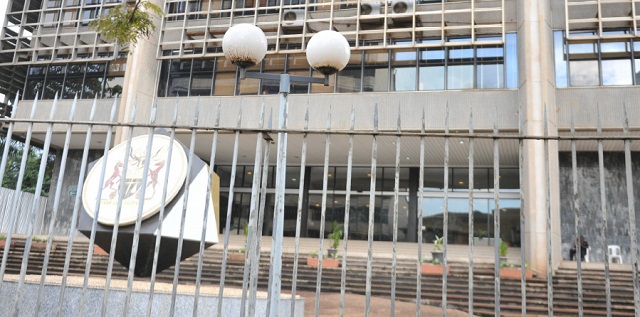
Several potential vulnerabilities remain related to the pace of the economic recovery and its effect on the income and loan repayment capacity of firms and households
Kampala, Uganda | ISAAC KHISA | Uganda’s commercial banks recorded the third drop in full year profits in 10 years weighed down by increased operating expenses amidst slow business activities as a result of coronavirus pandemic.
The bank’s net profit for the financial year ended December 2020 dropped by 4.4% to Shs848.5billion compared to Shs887.5billion the previous year.
The sector’s aggregate return on assets (ROA) and return on equity (ROE) stood at 2.4% and 14.2% for the year ended December 2020, lower than 2.9 % and 16.7% for 2019 respectively. Five commercial banks out of the country’s 25 commercial banks, albeit small by their relative asset size in the industry, were loss-making, during the year.
“During the year 2020, the COVID-19 Pandemic caused considerable disruption to the financial health of corporate entities and households across all sectors of the economy,” said Prof. Emmanuel Tumusiime-Mutebile, Bank of Uganda governor, in the latest Annual Supervision Report 2020.
The performance came on the back of decline in revenues and increased costs of operation owed to covid-19 pandemic, dipping the sector into the third full year drop in net profit since 2010.
Banks had recorded in 2013 recorded a 24% decline in net profit to Shs414billion before peaking up in 2014 with Shs541.2billion. In 2016, the net profits declined again, this time with 44% to Shs302.1billion but has since been recording continued growth until the coronavirus pandemic wreaked havoc to businesses.
During the period under review, banks recorded a surge in income from Shs4.2trillion in 2019 to Shs4.5trilion owed to increased returns from government securities and foreign exchange business segments.
However, expenses rose faster from Shs3trillion to Shs3.4trillion as the financial sector sought to implement Standard Operating Procedures (SOPs) to contain the spread of the virus. The aggregate sector Non Performing Loans ratio increased from 4.9% in December 2019 to 5.3% in December 2020 on the back of weak economic activity hampered by the onset of the COVID-19 pandemic which adversely affected the income of borrowers.
Sector NPLs
There was also a significant increase in the stock of NPLs by 22.4% (Shs.156.3billion) from Shs696.8billion as at the end December 2019 to Shs853.1billion as at end December 2020.
In relation to sector performance, NPLs under the trade and commerce sector registered the largest rise of Shs24.6billion (or 11.8%), and the sector’s NPLs accounted for 27.1% of the industry stock of NPLs as at the end of 2020.
However, the utilities sector held the highest NPL ratio of 18.2%, demonstrating that the adverse performance of the sectors where banks are highly concentrated can significantly affect the banks’ asset quality and profitability.
Total assets grew by 16.8% (Shs5.5 trillion) from Shs32.8 trillion in December 2019 to ShS38.3 trillion in December 2020 on account of an increase in holdings of government securities which rose by 39.9% (Shs2.9 trillion) to Shs.10.1 trillion, gross loans and advances by 12.3 percent (Shs.1.8 trillion) to Shs.16.3 trillion, and balances with banks abroad which increased by 22.6% (Shs.0.59 trillion) to Shs3.19 trillion.
Furthermore, banks increased the investment in liquid and less risky assets such as government securities and cash balances in comparison to loans and advances to the private sector. Hence, the holding of government securities as a proportion of total assets increased from 21.97 percent to 26.29%, while the ratio of gross loans and advances to total assets reduced from 44.04 % to 42.51% over the year to December 2020.
Future outlook
Looking ahead, BoU says the overall risk to financial sector stability edged up marginally in the year to December 2020, but remained relatively contained by BOU policy action implemented over the pandemic period.
However, several potential vulnerabilities remain, related to the pace of the economic recovery and its effect on the income and loan repayment capacity of firms and households and banks’ loss absorbency, BoU notes.
****
 The Independent Uganda: You get the Truth we Pay the Price
The Independent Uganda: You get the Truth we Pay the Price



